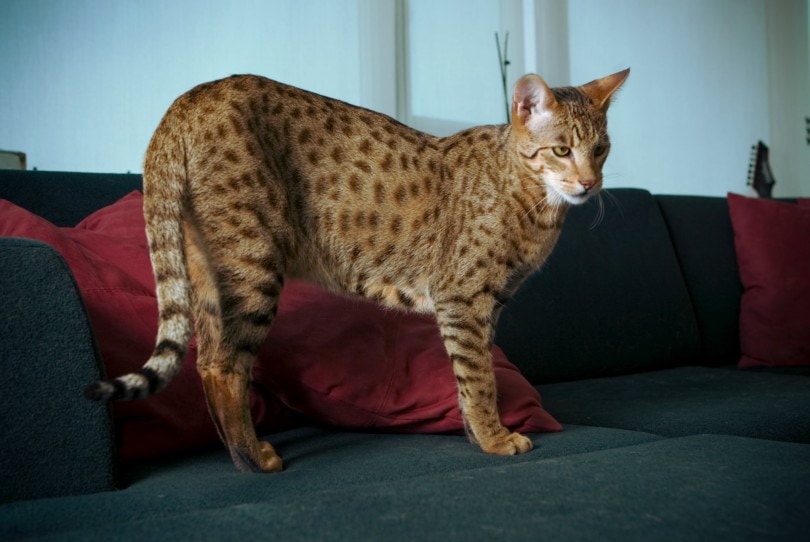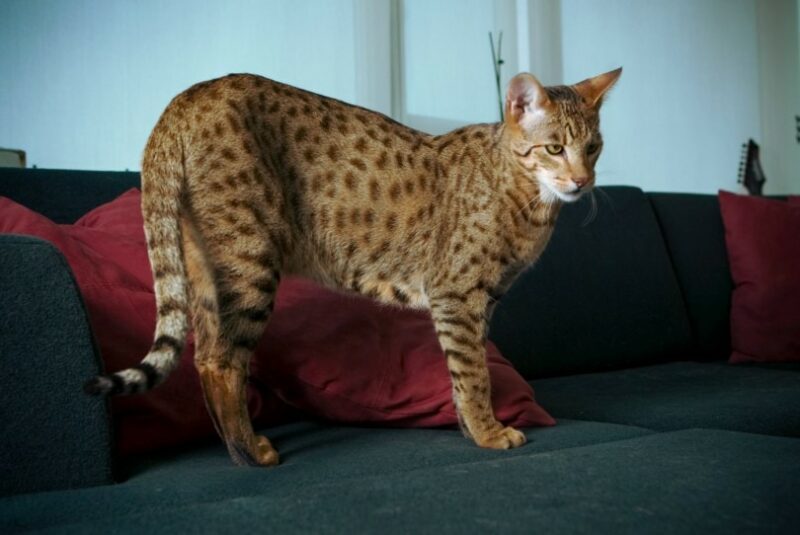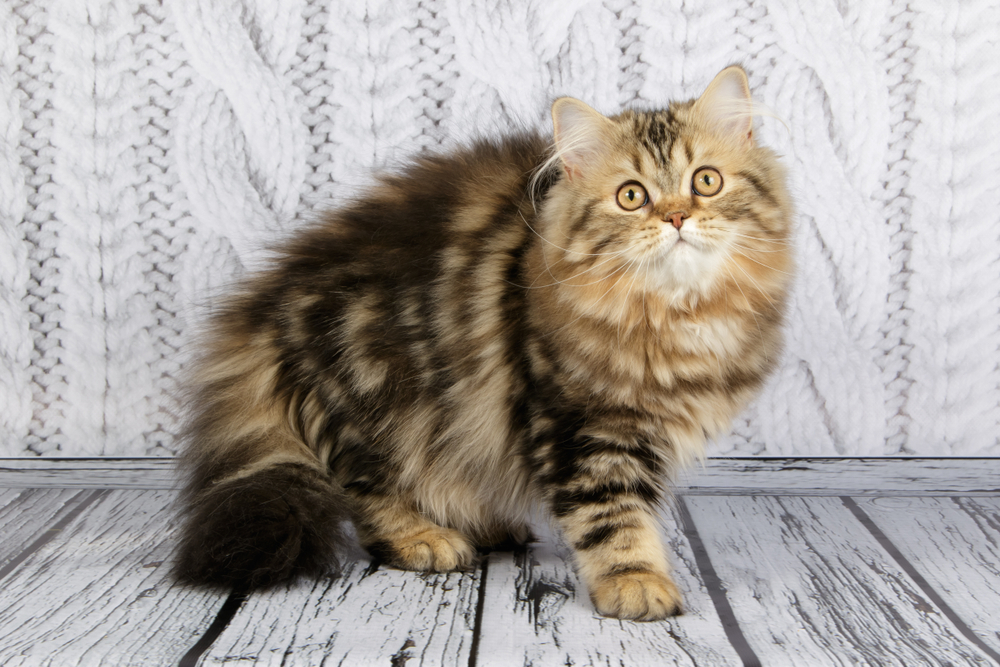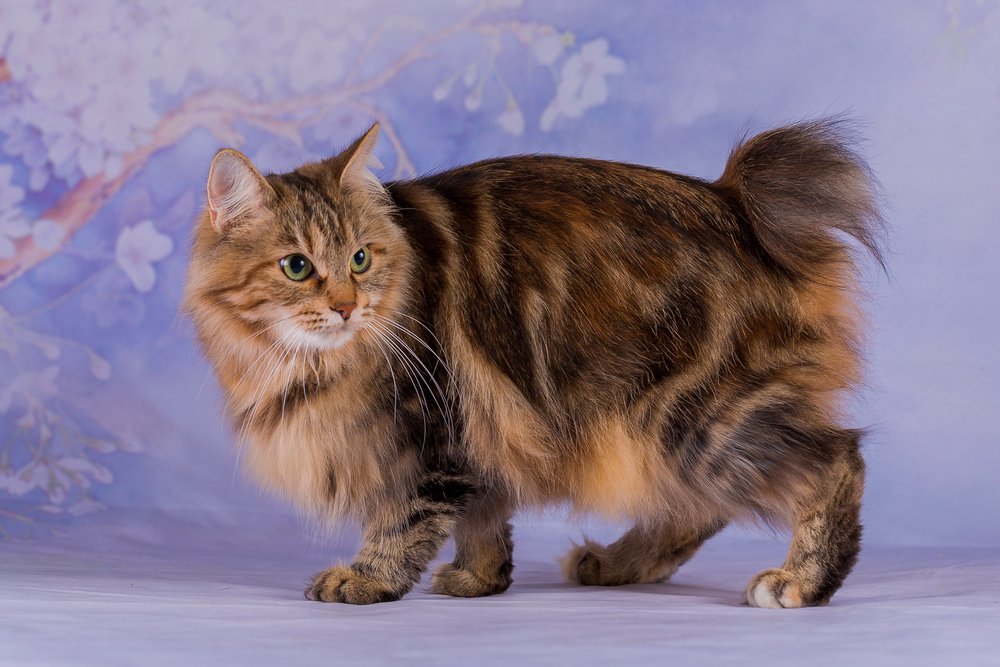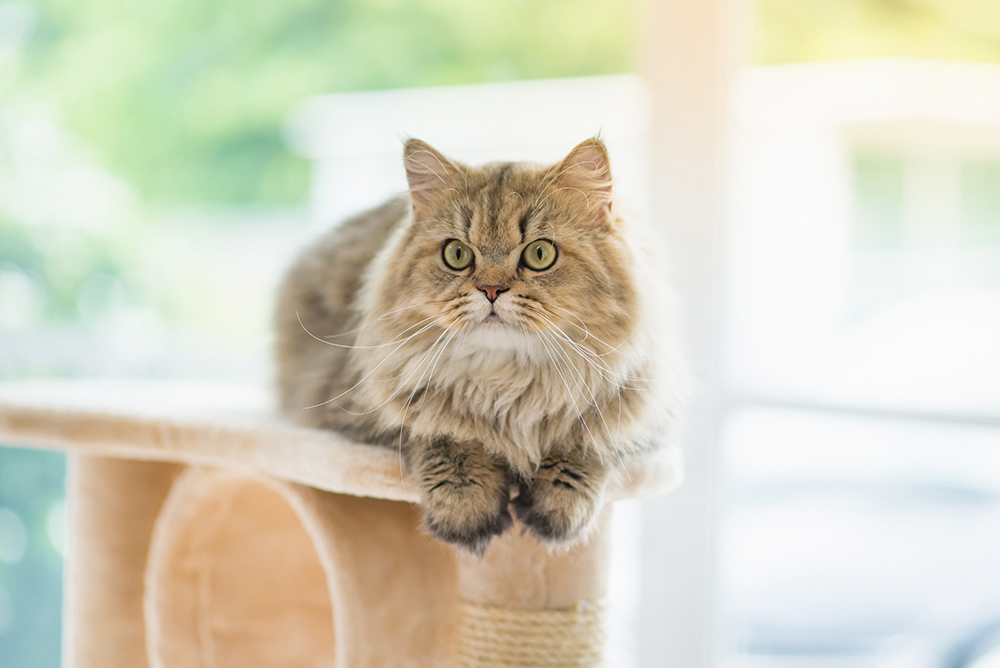Click Below to Skip Ahead
The Ashera cat is a bit like an urban legend. We don’t really know if they exist or if this exotic feline that’s been marketed as “the world’s rarest and most expensive cat breed” is actually just a Savannah cat. Read on as we explore the nebulous history of this cat!
The Ashera cat is often described as a magnificent feline specimen due to their wild, leopard-like appearance, yet they have a mild temperament. They are claimed to be a hybrid resulting from the cross of an African Serval, an Asian Leopard cat, and a domestic cat.

Breed Overview
Height:
22–24 inches
Weight:
15–30 pounds
Lifespan:
12–20 years
Colors:
Cream with brown spots
Suitable for:
Active families with older children
Temperament:
Playful, highly intelligent, affectionate, but also wildly independent
However, there is much debate regarding the authenticity of this huge kitty. In fact, a few reputable sources—including the Savannah Cat Association—suggest that the entire Ashera breed is a hoax and that they are actually Savannah cats being sold for an exorbitant price! Evidence lending credence to this theory includes that the Ashera cat shares many similarities with the Savannah.
Let’s explore their characteristics so you can form your own opinion about these majestic felines!
Ashera Cat Characteristics

Ashera Kittens
The Ashera was developed in 2006 by a Delaware-based biotech company called Allerca Lifestyle Pets1. This gorgeous new breed was apparently a hybrid of a domestic cat, an African Serval, and an Asian Leopard cat. However, the company never divulged the breeding records, presumably to build an aura of mystery around these beautiful felines and to justify their staggering selling price. Company owner Simon Brodie also claimed that the breed was 96% hypoallergenic—which was later proven wrong by a 2013 ABC News report 2.
Furthermore, the Savannah Cat Association 3 stated that in 2008, three Ashera kittens were confiscated at Schiphol Airport in the Netherlands, but DNA testing revealed that these kittens were actually Savannahs.
The company closed in 2015, but since the Ashera cat is not recognized by any official feline association, there are no standards or breeding records that can be used to verify the authenticity of kittens sold by potential breeders.
If you ever did find an authentic Ashera breeder (beware of so-called “official” breeders that you can find online), you would have to pay thousands of dollars to get one. That’s an outrageous amount of money for a pet that you’re not even sure has legitimate origins.

Temperament & Intelligence of the Ashera Cat
Due to the controversial and unclear origins of the Ashera cat, specific details about this breed are mostly speculation. That said, since they are likely closely related to Savannah cats, they share many similarities.
For instance, the Ashera is often portrayed as having a dog-like personality. They enjoy playing in water, following their humans around the house, playing fetch, and even being walked on a leash. They are said to be affectionate yet independent, as well as playful, friendly, and loyal to their owners.
The Ashera cat is also believed to be gifted with keen intelligence. They can learn tricks and commands quickly, but this level of intelligence requires daily stimulation and mental enrichment to prevent boredom-related behaviors, like scratching your favorite sofa or knocking all the knick-knacks off your shelves.
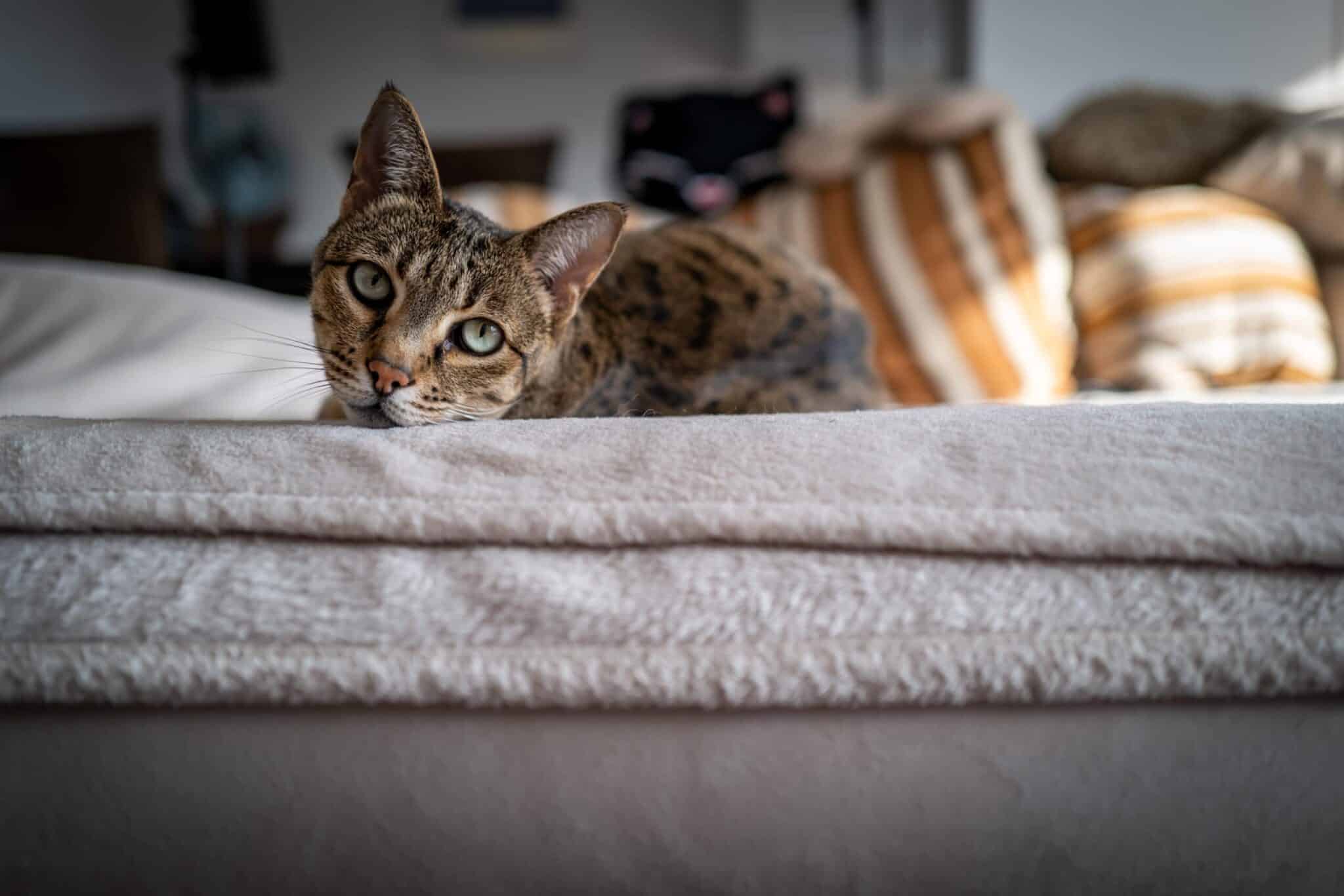
Are These Cats Good for Families?👪
Yes, these cats are good for families—if they have enough time and attention to devote to this luxury cat’s needs and the appropriate budget to provide all the necessary supplies.
Does This Breed Get Along With Other Pets?
Due to their “dog-like” personalities and friendly temperaments, trained and socialized Ashera cats can get along well with the dogs in the household and might consider other cats as fellow playmates. However, housing them with small pets like hamsters, guinea pigs, or rabbits is not a good idea due to their high prey drive.

Things to Know When Owning an Ashera Cat
Food & Diet Requirements🐡
Due to their athletic build and high caloric needs, these big cats require a diet high in protein and other important nutrients. However, it’s best to consult your vet for more personalized nutritional advice, as such an exotic breed is likely to have different nutrient requirements than a typical domestic cat.

If you need to speak with a vet but can’t get to one, head over to PangoVet. It’s an online service where you can talk to a vet online and get the personalized advice you need for your pet — all at an affordable price!
Exercise🐈
Considering their large size, Ashera cats need more exercise than the average house kitty. If you don’t have at least 30 minutes a day to play and entertain them, you’ll need to buy or DIY a few sturdy cat trees to put around your house so they can run and jump as they please. Getting robust shelving units to be strategically installed on the walls can function as an “obstacle course” where your wild feline can chase imaginary prey all day long.
Training🧶
The Ashera cat is said to be quite trainable. Indeed, it is possible to teach these felines to walk on a leash or learn tricks like giving a paw-shake or even playing dead. Clicker training tends to be effective, as is the use of treats and praise. Whichever training method you choose, make sure it’s based on positive reinforcement (this goes for any breed of cat).
Grooming ✂️
Like Savannahs, Ashera cats have relatively easy-to-care-for coats. A good weekly brushing is more than enough to remove dead hair and keep their fur soft and smooth.
Health and Conditions 🏥
Ashera cats are considered hardy and can live up to 20 years in some cases. However, they can develop the same health issues as Savannahs, including heart disease, progressive retinal atrophy, or a serious condition called pyruvate kinase deficiency, which causes red blood cells to break down faster than usual.
- Dental disease
- Progressive retinal atrophy
- Hypertrophic cardiomyopathy
- Pyruvate kinase deficiency

Male vs. Female
Generally, males tend to be larger, heavier, and more affectionate than females. However, this information should be taken with a grain of salt, given the lack of specific data on male and female Ashera cats.

3 Little-Known Facts About the Ashera Cat
1. They Are Not Recognized by Any Official Cat Association
Ashera cats are not recognized by the Cat Fanciers Association nor The International Cat Association. Several experts and organizations believe that the Ashera is actually the result of crossbreeding between different exotic breeds, including the Bengal cat and the Savannah cat.
2. They Raise Ethical Concerns (Like All Exotic Hybrids)
If Ashera cats are indeed hybrids, their lineage involves breeding domestic cats with their wild counterparts, such as Servals, Asian Leopard Cats, or Jungle Cats. This hybridization raises ethical concerns about keeping and breeding wild animals as pets, as well as the potential impact on the health and well-being of the resulting cats.
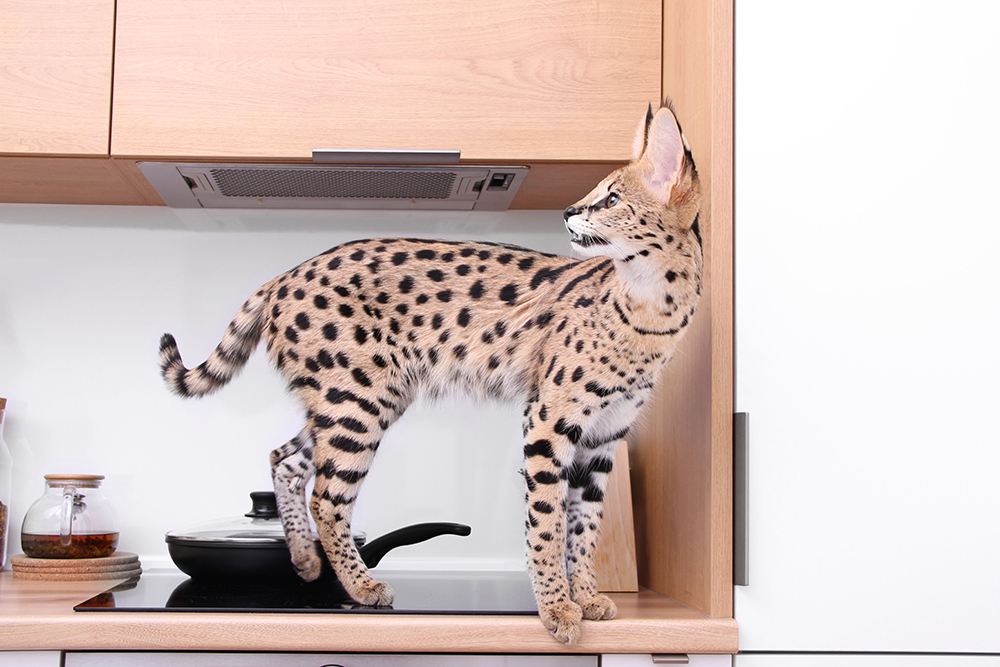
3. They Have a Jaw-Dropping Price Tag
These cats sell for a ridiculous amount of money, around $125,000 and up. This exorbitant cost can be attributed to the supposed rarity and unique characteristics of this “breed.”

Final Thoughts
Overall, the Ashera cat seems more likely to be a highly elaborate marketing ploy to sell an overpriced animal than a genuine unique breed. While the concept of hybrid breeds is not uncommon in the feline world, the authenticity and genetic makeup of the Ashera remains a matter of debate.
So, before you seek out an Ashera cat, you should consult reputable breed organizations and do your research thoroughly. For what it’s worth, there are thousands of cats in shelters across the country. If you really do have such a huge budget, you could make a big difference in the lives of these animals and help them find their forever homes.
Other cat breeds you might want to check out:
- LaPerm Cat, Breed Info. Pictures, Traits & Facts
- Gato Cat Breed Info: Pictures, Temperament & Traits
Featured Image Credit: Mirencats, Shutterstock

